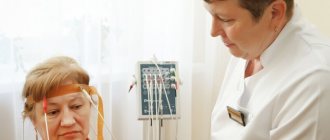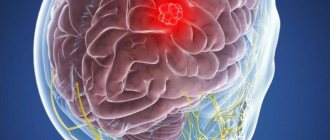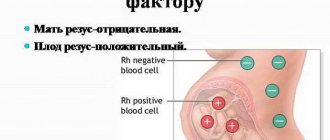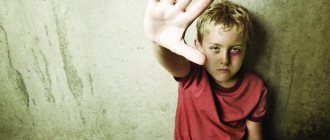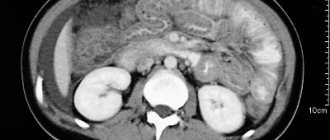Symptoms of epilepsy are a combination of neurological factors, as well as somatic and other signs, which indicate the occurrence of a pathological process in the neurons of the human brain. Epilepsy is characterized by chronic excessive electrical activity of brain neurons, which is expressed by periodic seizures. In the modern world, about 50 million people (1% of the world's population) suffer from epilepsy. Many people believe that with epilepsy a person must fall to the floor, convulse, and foam must flow from his mouth. This is a common misconception, imposed more by television than by reality. Epilepsy has many different manifestations that are worth knowing about in order to be able to help a person during an attack.
Symptoms
The course of epilepsy has a paroxysmal character; after the end of the attack, signs of the disease are usually absent, but cognitive impairment and other nonspecific symptoms may be observed. Clinical manifestations depend mainly on the type of seizure - partial or generalized seizure. The severity of epilepsy (mild, moderate, severe) and the location of the lesion also influences. Epilepsy is indicated by the occurrence of more than two seizures; one person may have both partial and generalized seizures.
Partial seizure
A partial seizure is usually preceded by the appearance of an aura (nausea, dizziness, general weakness, ringing in the ears, etc.), that is, the patient anticipates another exacerbation. There are two types of partial seizure - simple and complex. In a simple attack, the patient is conscious, while a complex attack is characterized by loss of consciousness. A partial attack is accompanied by motor, sensory and vegetative-visceral and mental manifestations.
| Partial seizure component | What's happening |
| Motor | Local convulsions appear. For example, only the left or right hand twitches, while other parts of the body remain motionless. Local seizures can be localized in any part of the body, but most often affect the upper or lower limbs, face |
| Sensitive | The sensitive component often manifests itself in the form of unusual sensations in the body (numbness, crawling sensation). Gustatory, olfactory, auditory, or visual hallucinations may also occur. |
| Vegetative-visceral | The vegetative-visceral component manifests itself in the form of redness or pallor of the skin, increased sweating, dizziness, a lump in the throat, a feeling of squeezing behind the sternum |
| Mental | Attacks with mental dysfunction manifest themselves in the form of derealization (a feeling of a change in the real world), unusual thoughts and fears, aggression |
A pathological focus in the brain can spread, in which case a partial attack becomes a generalized one.
Generalized attack
A generalized seizure often appears suddenly, without a preceding aura. The pathological discharge during a generalized seizure completely covers both hemispheres of the brain. The patient is unconscious, that is, does not realize what is happening; most often (but not always) the seizure is accompanied by convulsions. Generalized seizures are convulsive - tonic, clonic, tonic-clonic, and non-convulsive (absence seizures).
| Type of attack | Characteristics, what it looks like | Consciousness |
| Tonic | Tonic seizures occur rarely (approximately 1% of cases). Muscle tone increases, the muscles become as if they were made of stone. Tonic spasms affect all muscle groups, so the patient often falls | Absent |
| Clonic | Clonic convulsions appear in the form of rapid and rhythmic twitching, affecting all muscle groups | Absent |
| Tonic-clonic | A tonic-clonic seizure is the most common and consists of two phases - tonic and clonic. In the tonic phase, strong muscle tension is observed. The patient often falls, breathing stops, and tongue biting may occur. Then the clonic phase begins - twitching of all muscles occurs. Gradually the cramps stop, involuntary urination may occur, after which the patient usually falls asleep | Absent |
| Absence seizures | Absence is a non-convulsive form of a generalized seizure, which in most cases develops in children and adolescents. When absence seizure develops, the child suddenly freezes. There may be trembling of the eyelids, tilting of the head, and with complex absence seizure the child may make automatic movements. Seizures last a few seconds and can go undetected for a long time | Disturbed, but not completely disabled |
What do seizures look like in epilepsy?
Seizures due to changes in certain parts of the brain
Local, partial or focal seizures are the result of pathological processes in one part of the human brain. Partial seizures can be of two types - simple and complex.
Simple partial seizures
With simple partial seizures, patients do not lose consciousness, but the symptoms present will always depend on which part of the brain is affected and what exactly it controls in the body.
Simple seizures last about 2 minutes. Their symptoms are usually expressed in:
- a sudden causeless change in a person’s emotions;
- the occurrence of twitching in various parts of the body - limbs, for example;
- feeling of deja vu;
- difficulty understanding speech or pronouncing words;
- sensory, visual, auditory hallucinations (flashing lights before the eyes, tingling in the limbs, etc.);
- unpleasant sensations - nausea, goose bumps, changes in heart rate.
Complex partial seizures
With complex partial seizures, similar to simple ones, the symptoms will depend on the area of the brain that is affected. Complex seizures affect a larger part of the brain than simple ones, causing changes in consciousness and sometimes loss of consciousness. The duration of a complex attack is 1-2 minutes.
Among the signs of complex partial seizures, doctors identify:
- the patient's gaze into emptiness;
- the presence of an aura or unusual sensations that occur immediately before a seizure;
- patient screams, repeating words, crying, laughing for no reason;
- senseless, frequently repeated behavior, automaticity in actions (walking in a circle, chewing movements without reference to food, etc.).
After the attack, the patient experiences disorientation. He does not remember the attack and does not understand what happened and when. A complex partial seizure can begin with a simple one, and then develop and sometimes turn into generalized convulsions.
Generalized seizures
Generalized seizures are a seizure that occurs when pathological changes occur in a patient in all parts of the brain. All generalized seizures are divided into 6 types - tonic, clonic, tonic-clonic, atonic, myoclonic and absence.
Tonic seizures
Tonic seizures got their name due to the special effect on human muscle tone. Such cramps provoke tension in muscle tissue. Most often this affects the muscles of the back and limbs. Typically, tonic spasms do not cause fainting. Such attacks occur during sleep and last no more than 20 seconds. However, if the patient is standing while they occur, he is more likely to fall.
Clonic seizures
Clonic seizures are quite rare compared to other types of generalized seizures, and they are characterized by rapid alternating relaxation and contraction of muscles. This process provokes rhythmic movement of the patient. Most often it occurs in the hands, neck, and face. It will not be possible to stop such a movement by holding the twitching part of the body.
Tonic-clonic seizures
Tonic-clonic seizures are known in medicine as grand mal - “big disease”. This is the most typical type of seizures that occur with epilepsy in the minds of many people. Their duration is usually 1-3 minutes. If a tonic-clonic attack lasts longer than 5 minutes, this should be a signal to urgently call an ambulance.
Tonic-clonic seizures have several phases. In the first, tonic phase, the patient loses consciousness and falls to the ground. This will be followed by a convulsive or clonic phase, since the attack will be accompanied by twitching, similar to the rhythm of clonic seizures. When tonic-clonic seizures occur, a number of actions or events may occur:
- the patient may experience increased salivation or foaming from the mouth;
- the patient may accidentally bite his tongue, which will lead to bleeding from the bite site;
- a person, without controlling himself during a period of convulsions, can get hurt or hit surrounding objects;
- patients may lose control over the excretory functions of the bladder and bowels;
- The patient may experience blue discoloration of the skin.
After the end of the tonic-clonic convulsion, the patient is weakened and does not remember what happened to him.
Atonic attacks
Atonic or astatic seizures, which involve brief loss of consciousness by the patient, get their name due to the loss of muscle tone and strength. Atonic attacks most often last up to 15 seconds.
When atonic seizures occur in patients in a sitting position, either falling or simply nodding the head may occur. If the body is tense in the event of a fall, it is worth talking about a tonic attack. At the end of the atonic seizure, the patient does not remember what happened. Patients prone to atonic attacks may be advised to wear a helmet, since such attacks contribute to head injury.
Myoclonic spasms
Myoclonic seizures are most often characterized by rapid jerking movements in some parts of the body, like small jumps inside the torso. Myoclonic seizures mainly affect the arms, legs, and upper body. Even those people who do not suffer from epilepsy may experience myoclonic spasms when falling asleep or waking up in the form of twitching or jerking. Hiccups are also classified as myoclonic spasms. Patients have myoclonic seizures affecting both sides of their body. The attacks last a few seconds and do not cause loss of consciousness.
The presence of myoclonic seizures may indicate several epileptic syndromes, for example, juvenile or progressive myoclonic epilepsy, Lennox-Gastaut syndrome.
The nature of absence seizures
Absence seizure or petit mal most often occurs in childhood and is a short-term loss of consciousness. The patient may stop, look into emptiness and not perceive the surrounding reality. In complex absence seizures, the child experiences some muscle movements, such as rapid blinking of the eyes, or chewing-like movements of the arms or jaw. Absences last up to 20 seconds in the presence of muscle cramps and up to 10 seconds in their absence.
With a short duration, absence seizures can occur repeatedly even within 1 day. They can be suspected if the child is sometimes able to switch off and does not respond to the treatment of people around him.
Epilepsy: diagnosis
The diagnostic complex includes the following points:
— A detailed anamnestic survey, with an emphasis on hereditary pathological predisposition. Temporary occurrence (age-related characteristics), frequency, and already formed symptom complex are noted.
— Conducting a neurological examination, identifying the following symptoms: migraine headache, which can serve as a repulsive factor for organic brain damage.
— Mandatory studies include MRI, CT and positron emission tomography.
— The main method is electroencephalography, for recording altered electrical brain activity. On the electroencephalogram, they look for the so-called “peak wave” (a set of pathological focal complexes) or slow waves of unequal symmetry. The most common types of waves are: sharp, complex “peak-slow” and “peak-sharp-slow”. With excessively high convulsive readiness of the brain, one can judge by generalized high-amplitude groupings of several “peak waves” with a frequency of 3 Hertz (this frequency is typical for absence seizures).
But it is important to know that epiactivity can also be a normal human condition, under certain circumstances in 10% of healthy people. While outside of an epileptic seizure occurring in patients with this pathology, a normal picture is observed in 42% of cases
To exclude this, secondary EEG examinations, provocation tests, and many hours of video-electroencephalogram monitoring are carried out. With modern devices, it is possible not only to detect a pathological rhythm, but also to find the location of such a focus of convulsive readiness, relative to the cerebral lobes.
— General biochemical blood test - to determine metabolic disorders in the bloodstream.
— Consultation with an ophthalmologist to examine the optic discs for edema (with increased intracephalic pressure) and determine the condition of the fundus vessels.
Symptoms of nocturnal epilepsy
Epileptic seizures during sleep occur in 30% of patients with this type of pathology. In this case, seizures are most likely the day before, during sleep or just before waking up.
Sleep has fast and slow phases, during which the brain has its own peculiarities of functioning.
During the slow phase of sleep, the electroencephalogram records an increase in the excitability of nerve cells, the index of epilepsy activity, and the likelihood of an attack. During the fast phase of sleep, the synchronization of bioelectrical activity is disrupted, which leads to the suppression of the spread of electrical discharges to neighboring parts of the brain. This generally reduces the likelihood of an attack occurring.
When the fast phase is shortened, the threshold for seizure activity decreases. Sleep deprivation, on the contrary, increases the likelihood of frequent seizures. If a person does not get enough sleep, he becomes drowsy. This condition is very similar to slow sleep phase, which causes abnormal electrical activity in the brain.
Seizures are also triggered by other sleep problems, for example, even a single sleepless night can cause someone to develop epilepsy. Most often, if there is a predisposition to the disease, development is influenced by a certain period during which the patient had a clear lack of normal sleep. Also, in some patients, the severity of attacks may increase due to disturbances in sleep patterns, too sudden awakenings, from taking sedatives or overeating.
The symptoms of nocturnal epilepsy attacks, regardless of the patient’s age, can be varied. Most often, nocturnal seizures are characterized by convulsions, tonic, clonic seizures, hypermotor actions, and repetitive movements. With frontal autosomal nocturnal epilepsy, during attacks the patient may walk in his sleep, talk without waking up, and experience fear.
All of the above symptoms can appear in all sorts of combinations in different patients, so there may be some confusion when making a diagnosis. Sleep disturbances are typical manifestations of various pathologies of the central nervous system, not just epilepsy.
Treatment of epilepsy
Most people are concerned with the question: “can epilepsy be cured,” since there is an opinion that this pathology is incurable. Despite the danger of the described illness, it can be cured, provided that it is detected early and adequately treated. In approximately 80% of cases, stable remission can be achieved. If this disease is detected for the first time and adequate therapy is started immediately, then in 30% of people with epilepsy, attacks no longer recur or stop for at least two to three years.
How to treat epilepsy? The choice of treatment methods for the pathology in question, depending on its form, type, clinical picture, age of the patient, and lesion site, is carried out either surgically or by a conservative method. Modern medicine more often resorts to drug treatment, since taking antiepileptic drugs gives a lasting effect in almost 90% of cases.
Conservative therapy covers several stages:
- differential diagnosis, which allows you to determine the form of the disease and the type of seizures for the correct selection of drugs;
— establishing the factors that gave rise to epilepsy;
- prevention of seizures to completely eliminate risk factors such as overwork, stress, lack of sleep, hypothermia, alcohol consumption;
- relief of epileptic seizures by providing emergency care and prescribing an anticonvulsant.
It is important to inform relatives about the diagnosis and instruct them on precautions and first aid for seizures. Since during seizures there is a high probability of injury to patients and respiratory arrest due to tongue retraction
Drug treatment of epilepsy involves regular use of antiepileptic drugs. It is impossible to allow a situation in which an epileptic takes medication only after the onset of an epileptic aura, since with timely administration of an antiepileptic drug, harbingers of an upcoming seizure, in most cases, do not appear at all.
What to do if you have epilepsy?
Conservative treatment of epilepsy involves following the following rules:
— strict adherence to the schedule for taking medications and dosages;
— once positive dynamics are achieved, you should not stop taking medications without the permission of a specialist;
- promptly notify your doctor of any unusual manifestations, changes in well-being, changes in condition or mood.
Patients suffering from partial epileptic seizures are prescribed such groups of drugs as carboxamides, valproates, phenytoins. For patients with generalized seizures, a combination of valproate and carbamazepine is indicated; for the idiopathic form, valproate is used; for absence epilepsy - ethosuximide; for myoclonic convulsions - only valproate.
With persistent remission of epilepsy lasting at least five years, you can think about stopping drug therapy.
Treatment of epilepsy should be completed gradually, reducing the dose of drugs until complete cessation within six months.
First aid for epilepsy involves, first of all, preventing tongue retraction by inserting some object between the patient’s jaws, preferably made of rubber or other material, but not very hard. It is not recommended to carry the patient during a seizure, but to avoid injury, it is necessary to place something soft under the head, for example, clothes rolled up in a bag. It is also recommended to cover the epileptic's eyes with something dark. With limited access to light, the seizure passes faster.
Types of epilepsy attacks
Manifestations of epilepsy appear, as we noted, in the form of seizures, and they have their own classification:
- Based on the cause of occurrence (primary epilepsy and secondary epilepsy);
- Based on the location of the original focus, characterized by excessive electrical activity (deep parts of the brain, left or right hemisphere);
- Based on a variant that shapes the development of events during an attack (with or without loss of consciousness).
In a simplified classification of epilepsy attacks, generalized partial attacks are distinguished.
Generalized seizures are characterized by attacks in which there is a complete loss of consciousness, as well as control over the actions performed. The reason for this situation is excessive activation, characteristic of the deep parts of the brain, which subsequently provokes the involvement of the entire brain. The result of this condition, expressed in a fall, is not at all necessary, because muscle tone is disturbed only in rare cases.
As for this type of seizures, such as partial seizures, it can be noted that they are characteristic of 80% of the total number of adults and 60% of children. Partial epilepsy, the symptoms of which manifest themselves when a focus with excessive electrical excitability forms in a particular area in the cerebral cortex, directly depends on the location of this focus. For this reason, manifestations of epilepsy can be motor, mental, autonomic or sensory (tactile) in nature.
It should be noted that partial epilepsy, like localized and focal epilepsy, the symptoms of which represent a separate group of diseases, are based on metabolic or morphological damage to a specific area of the brain. They can be caused by various factors (brain injuries, infections and inflammatory lesions, vascular dysplasia, acute type of cerebrovascular accident, etc.).
When a person is conscious, but with a loss of control over a certain part of the body or when he experiences previously unusual sensations, we are talking about a simple attack. If there is a disturbance of consciousness (with partial loss of it), as well as a person’s lack of understanding of where exactly he is and what is happening to him at the moment, if entering into any contact with him is not possible, then this is a complex attack. As with a simple attack, in this case uncontrolled movements are made in one or another part of the body, and imitation of specifically directed movements often occurs. Thus, a person can smile, walk, sing, talk, “hit a ball,” “dive,” or continue the action that he began before the attack.
Any type of attack is short-term, and their duration is up to three minutes. Almost every attack is accompanied by drowsiness and confusion after its completion. Accordingly, if during an attack there was a complete loss of consciousness or its disturbances occurred, the person does not remember anything about it.
Petite epileptic seizure
Petit mal seizures can occur in various forms. Lennox described a triad of petit mal seizures: absences, akinetic and myoclonic petit mal seizures. Absence is an instant shutdown of consciousness and stoppage of movement. The patient seems to freeze in the position in which the seizure caught him, and after 2-3 seconds, when the seizure ends, he continues the interrupted action. Sometimes patients feel the onset of absence seizure and figuratively say “I’m thinking.” During such an attack, the patient may turn pale (facial hyperemia appears less frequently), slightly roll his eyes upward, and throw back his head. Seizures occur more often in series, many times a day, mainly after sleep, in the morning.
Akinetic seizures are caused by a general decrease in muscle tone. The patient falls rapidly and sometimes inflicts severe bruises on himself. Consciousness does not always turn off. The seizure lasts 1-2 seconds.
Myoclonic petit mal seizures can be single or serial. General or localized myoclonic jerks occur with varying degrees of stunning or complete loss of consciousness. Myoclonic seizures of petit mal epilepsy are a common form with a relatively benign course. It differs sharply from the severe, progressive hereditary degenerative disease - Unfericht-Lumpert myoclonus epilepsy.
The clinic of minor forms of childhood epilepsy primarily reflects the age-related stages of physiological maturation of motor systems in the brain, which are associated with various states of muscle tone and statics of the child at different age periods. I. S. Tets proposed the following classification of petit mal seizures in childhood:
- triad - propulsive, retropulsive and impulsive;
- psychomotor.
Propulsive seizures are rapid tonic movements of flexor muscle groups with the direction of movement forward. Already mature motor systems participate in the convulsive reaction. Up to 2-3 months, a child’s propulsive seizures are manifested by tilting the head (“nodding”). By 6 months, they can be replaced by “bows” and folding of the body at the waist. After the age of 1 year, forward movements of the entire body with falling may occur.
Propulsive seizures are more often observed in young children (up to 3 years old) with residual effects of severe organic brain damage (a group of cerebral palsy, childhood encephalopathy), and are combined with oligophrenia. The seizures are short-lived, but occur serially. With a high frequency of seizures, children are stunned, intelligence seems to be deeply reduced, and when the frequency of seizures decreases under the influence of treatment, it turns out that it is more preserved than was thought. The most severe type of propulsive seizures, Salaam seizures, are observed in severe forms of microcephaly, mental retardation, and residual organic encephalopathies. Seizures are expressed in a series of stereotypical tilts of the head forward and raising of the arms upward (“salaam” - bow). This type of seizure is usually resistant to anticonvulsant drugs and has a rapidly progressive course.
Retropulsive seizures with backward movements of the head and body are observed in older children (5-8 years old) and proceed much more favorably. They are close to true absence seizures, but in children, as a rule, they are combined with rolling the eyes upward, throwing back the head, sometimes stamping on the spot, bending the body back, etc. During a seizure, general freezing, bending to the side, and sometimes bending may be observed body forward. Thus, retropulsive seizures can be polymorphic and combined with other types of petit mal seizures, and sometimes with grand mal seizures. Retropulsive seizures are usually serial, reach a high frequency, especially in the morning, but change the patient’s intellect and behavior relatively little.
The group of impulsive seizures includes myoclonic petitmals with general flinching, falling, etc. They are more often observed during puberty. Seizures tend to generalize into large convulsive discharges. Epileptic mental changes develop relatively quickly.
All types of minor seizures occur mainly in childhood, but, disappearing in adolescence, they can develop into polymorphic convulsive and grand mal seizures. In this regard, the treatment of minor forms of epilepsy must be combined with the use of anticonvulsants to prevent major seizures.
A particular form of epilepsy in children includes the so-called psychomotor paroxysms, which occur with twilight changes in consciousness. Some authors classify them as minor seizures of the general type, others as local seizures. While Penfield considers them purely temporal seizures, Gibbs and Gastaut observed psychomotor seizures with damage to the thalamo-mesencephalic regions. These data further suggest that the division into general and focal seizures is relative and can only be considered as a working framework for the clinician. When deciding on the localization of the initial focus of epileptic activity, it is not always possible to draw clinical, electrophysiological parallels.
The classic type of psychomotor seizure is the state of ambulatory automatism. Suddenly a twilight change of consciousness occurs and the patient can uncontrollably, automatically perform consistent motivated actions and deeds. In this state, patients are able to go in different directions, use transport, purchase tickets, etc. When the seizure ends (after a few hours, and sometimes after a day) and normal consciousness is restored, the patient does not recognize the situation in which he finds himself, does not understand, where and how he got there, since he is completely amnesic for the seizure.
In children, psychomotor seizures are very frequent (16% according to Kreindler), but usually occur with elementary automatic actions. They are manifested by stereotypical clapping of hands, rubbing hands, scratching, repetition of a stereotypical, often meaningless phrase, grimacing, laughter, etc. Consciousness is disturbed.
Affective states of fear and horror are very common, during which children can cry, hide, cling to adults, and vegetative reactions are observed. The psychomotor type of seizures indicates an unfavorable course of epilepsy. Polymorphism of seizures, convulsive paroxysms, and epileptic personality degradation develop rapidly.
Types and classification of pathology
There are no two patients whose disease course is absolutely identical. Epilepsy is a multifaceted disease, and it has many varieties:
- Symptomatic. It is characterized by local and generalized seizures due to organic changes in the brain (tumor growth, head trauma).
- Cryptogenic. Accompanied by clear signs of epilepsy in adult women and men, but without an identified cause. Occurs in 70% of patients. The most common subtype is cryptogenic focal epilepsy. Its exact focus is determined during examination.
- Idiopathic. Symptoms appear due to dysfunction of the central nervous system without organic changes affecting brain structures.
- Alcoholic. Occurs as a result of toxic damage to the body due to the abuse of alcoholic beverages. Another binge can result in an alcoholic having an attack of epilepsy during a hangover.
There is also non-convulsive epilepsy, manifested by several subtypes:
- sensory seizures without loss of consciousness, in which vision, hearing, taste, smell are impaired, and dizziness is also observed;
- vegetative-visceral seizures, characterized by indigestion. The patient begins to experience pain in the stomach, reaching the throat, nausea, vomiting, and a malfunction of the cardiac and respiratory systems occurs;
- mental attacks accompanied by disturbances of speech, memory, consciousness, and thinking.
Based on the location of the foci, they are distinguished:
- temporal lobe epilepsy, accompanied by generalized seizures with loss of consciousness and simple local episodes;
- parietal epilepsy, in which focal simple seizures are recorded. Its first symptoms include impaired body perception, dizziness, visual illusions;
- frontotemporal epilepsy with the presence of an abnormal focus in the frontal and temporal lobe. It can cause both complex and simple attacks with and without loss of consciousness.
According to the time of debut, the form of the disease is:
- Congenital, manifested against the background of abnormal intrauterine development of the fetus.
- Purchased. It appears due to the influence of negative factors that affect the integrity and functionality of the central nervous system.
There is nocturnal epilepsy, when seizures occur during sleep. During the period of brain activity, a person can bite his tongue, scratch his body, hit his head, and in the morning remember nothing about what happened. As a rule, this type of disease eventually develops into a daytime form.
Nonconvulsive manifestations
About half of epileptic seizures begin with non-convulsive symptoms. After them, all kinds of motor disorders, generalized or local convulsions, and disorders of consciousness can be added.
Among the main non-convulsive manifestations of epilepsy are:
- all kinds of vegetative-visceral phenomena, irregular heart rhythm, belching, occasional increase in body temperature, nausea;
- nightmares with sleep disorders, talking in sleep, screaming, enuresis, somnambulism;
- increased sensitivity, worsening mood, fatigue and weakness, vulnerability and irritability;
- sudden awakenings with fear, sweating and palpitations;
- decreased ability to concentrate, decreased performance;
- hallucinations, delirium, loss of consciousness, pale skin, feeling of deja vu;
- motor and speech retardation (sometimes only in sleep), attacks of numbness, disturbance in the movement of the eyeball;
- dizziness, headaches, memory loss, amnesia, lethargy, tinnitus.
Causes of epilepsy
There is no single common cause of epilepsy that could explain its occurrence. Epilepsy is not a hereditary disease in the literal sense, but still in certain families where one of the relatives suffered from this disease, the likelihood of the disease is higher. About 40% of patients with epilepsy have close relatives with this disease.
There are several types of epileptic seizures. Their severity varies. An attack in which only one part of the brain is to blame is called partial or focal. If the entire brain is affected, then such a seizure is called a generalized one. There are mixed attacks: they begin in one part of the brain and later cover the entire organ.
Unfortunately, in seventy percent of cases the cause of the disease remains unclear.
The following causes of the disease are common: traumatic brain injury, stroke, brain tumors, lack of oxygen and blood supply at birth, disorders of the brain structure (malformations), meningitis, viral and parasitic diseases, brain abscess.
Is epilepsy inherited?
Undoubtedly, the presence of brain tumors in ancestors leads to a high probability of transmitting the entire complex of the disease to descendants - this is in the idiopathic variant. Moreover, if there is a genetic predisposition of CNS cells to hyperreactivity, epilepsy has the maximum possibility of manifestation in descendants.
At the same time, there is a dual option – symptomatic. The decisive factor here is the intensity of the genetic transmission of the organic structure of brain neurons (property of excitability) and their resistance to physical influences. For example, if a person with normal genetics can “withstand” a blow to the head, then another, with a predisposition, will react to it with a generalized seizure of epilepsy.
As for the cryptogenic form, it has been little studied, and the reasons for its development are not well understood.
Is it possible to drink if you have epilepsy?
The clear answer is no! In any case, if you have epilepsy, you should not drink alcoholic beverages, otherwise, with a 77% guarantee, you can provoke a generalized convulsive seizure, which could be the last in your life!
Epilepsy is a very serious neurological disease! If all recommendations are followed and the “correct” lifestyle is followed, people can live peacefully. But if you violate the medication regimen or ignore prohibitions (alcohol, drugs), you can provoke a condition that will directly threaten your health!
Seizures
An epileptic seizure is a brain reaction that disappears after the root causes are eliminated. At this time, a large focus of neural activity is formed, which is surrounded by a containment zone, like the insulation of an electrical cable.
The extreme nerve cells do not allow the discharge to go throughout the brain as long as their power is sufficient. When it breaks through, it begins to circulate throughout the surface of the cortex, causing a “blackout” or “absence seizure.”
Experienced doctors know how to recognize epilepsy. In a state of absence seizure, the epileptic withdraws from the surrounding world: he becomes abruptly silent, concentrates his gaze on the spot and does not react to the environment.
Absence lasts a couple of seconds. When a discharge hits the motor zone, a convulsive syndrome appears.
The epileptic learns about the absence form of the disease from eyewitnesses, since he himself does not feel anything.
Diagnostics
The main source of information about the presence of a diagnosis of epilepsy in a patient for a doctor is information received from the patient himself.
At the first visit, he tells the doctor about all the features of his condition; if this pathology occurs in a child, then an important component of the diagnosis is a conversation with his parents. The patient should talk about how he feels before the attack, whether he remembers how the attack itself proceeded, and how he felt after it.
It is important for the doctor to determine whether this disease is primary or whether there is a symptomatic form when it is necessary to look for the root cause.
After the conversation, the doctor must conduct a full neurological examination to identify the severity of all reflexes, their symmetry, and the presence of pathological symptoms. If a diagnosis of epilepsy is suspected, then after an objective examination the doctor refers the patient for further examination.
Instrumental diagnostic methods
The main method for diagnosing epilepsy is electroencephalography, which is performed on all patients suspected of having this disease. It allows you to identify the presence of a focus of pathological activity and determine its location. Most often, sharp waves, peaks, “sharp wave-slow wave” and “peak-slow wave” complexes are recorded in this disease. The study is carried out both while awake and during sleep. It is most informative during the attack itself, but this is very difficult to do. The diagnosis of epilepsy is confirmed in every second patient, but in 50% of patients who described the classical symptoms of the disease to the doctor, electroencephalography may not reveal any changes. Thus, the absence of pathology during an EEG does not exclude the presence of this disease.
The second most used method in diagnosing epilepsy is magnetic resonance imaging of the brain. It cannot identify the focus of pathological activity, but it helps to detect organic damage (tumor, cyst, hematoma, stroke, etc.).
Laboratory diagnostic methods
The diagnosis of epilepsy, in which the patient has no other diseases, does not lead to changes in any laboratory parameters. Therefore, in diagnosis they are of secondary importance. They are used mainly to identify the cause of symptomatic epilepsy and concomitant diseases that served as the background for the development of this disease.
Epilepsy: treatment
The main thing is to diagnose in time and only then begin therapeutic measures to prevent negative side effects from antiepileptic drugs and rational selection of tactics
It is important to determine with your attending physician whether it is worth being treated on an outpatient basis or going to a hospital (neurological, psychiatric, general with a specific department); this is a very important fact, especially if a person requires round-the-clock monitoring and prevention of harm to himself or others
Treatment activities pursue the following goals:
- Anesthetize epileptic attacks, if the patient experiences pain, this can be leveled out by systematically regularly taking anticonvulsants or painkillers, and regularly eating foods enriched with calcium and magnesium.
— Prevent the occurrence of new epileptic attacks through surgery or drug correction with oral medications.
— Reduce the frequency of epileptic attacks.
- Reduce the duration of individual attacks.
— Achieve cessation of drug use.
— Minimize the side effects of treatment.
— To protect people dangerous to society.
Treatment of epilepsy is carried out both on an outpatient basis, under the supervision of a neurologist or psychiatrist, and on an inpatient basis - in hospitals or neurology departments, psychiatric hospitals.
Before starting treatment, it is important to determine the stages:
— Differential diagnosis of subtypes of epilepsy, for the most effectively selected treatment regimen.
— Finding the etiopathogenetic complex.
— Relief of epistatus and provision of first aid by prescribing anticonvulsants
It is important that the patient strictly follows medical instructions
Used medicinally:
• Anticonvulsants - anticonvulsants, which are used to reduce the frequency and duration of seizures and can also completely, in some cases, prevent the occurrence of seizures. These are Phenytoin, Carbamazepine, Levetiracetam, Ethosuximide.
• Neurotropic drugs that have the properties of inhibition or, conversely, stimulation of the transmission of impulse nervous excitation along the processes of the nervous glia of the cerebral cortex.
• Psychotropic – change the psychological status of a person and the very functioning of the nervous system.
• Racetamic group - psychoactive nootropic drugs.
Non-drug methods of treating epilepsy: surgical intervention in the field of neurosurgery (complex operations performed under local anesthesia so that the functional ability of parts of the brain can be controlled - motor, speech, visual), Voight's technique, ketogenic diet.
During the treatment period, the following rules should be followed:
— Strict adherence to the time of taking medications, without spontaneous changes in dosage.
— Do not take other medications on your own without consulting your doctor.
— Do not stop treatment without the permission of the neurologist.
— Promptly notify the doctor of any unusual symptoms and any changes in mood or personal well-being.
Antiepileptic drugs help suppress the disease in 63% of patients, and reduce clinical manifestations in 18%.
Unfortunately, until today there is no completely curative method, but by choosing the right therapeutic tactics for managing the patient, seizures can be eliminated in 60–80% of cases.
A therapeutic complex is a long-term, regular therapeutic moment in a person’s life.
Minor seizures, clinical manifestations
At the moment of a seizure, the patient freezes in a certain position, the started action is suspended, and the gaze is directed to one point. Consciousness during an attack is lost for a fraction of a second or several seconds. After the attack, the child continues the activity he started. With frequent attacks, mild fatigue is noted. Children do not know about the presence of seizures, but sometimes they feel that they are “thinking.” Complex absence seizures. Myoclonic absence seizures manifest as brief, sudden, symmetrical jerks (like an electric shock) in the proximal parts or throughout the body. At the moment of paroxysm, the child may fall or drop an object from his hands. Consciousness is not impaired. Attacks occur day and night. Myoclonic seizures can be triggered by sharp auditory or visual stimuli. Night shudders appear long before the clinical picture of epilepsy develops. Atonic absence seizures are characterized by a sudden short-term weakening or complete drop in postural tone and are manifested by a rapid buckling of the knees and a fall of the patient. Then the child slowly stands up. Sometimes weakening of tone is observed only in the muscles of the neck, which is manifested by a sudden rapid tilt of the head. Seizures can be longer, “fainting-like.” They begin suddenly, patients receive bruises, and consciousness is lost. There may be no seizures. The patient turns pale, breathing remains even, the pupils are wide. There is involuntary urination. Akinetic absence seizures. It is almost impossible to distinguish clinically from atonic ones. However, after a sudden fall, the patient quickly gets up and continues the interrupted activity. There are no seizures. The frequency of absence seizures varies up to several dozen per day. Seizures, in contrast to fainting, are so unexpected that the patient receives significant bruises. The status of absence seizures is characterized by prolonged, often for hours and days, blackouts with twitching of the eyelids, a blank look until the development of a stuporous state. Retropulsive seizures are designated in the same way as pycnoleptic absences. Clinically, they are characterized by short-term numerous paroxysms. The latter are expressed in a sudden switching off of consciousness without falling with tension in certain muscle groups - a slight tilt of the body back and rolling of the eyes. Sometimes vegetative manifestations are observed. Seizures occur more often in children 4-10 years old. They have increased excitability and emotional lability. Propulsive seizures, or infantile spasms (West syndrome), are clinically reminiscent of myoclonus. But they are slower, accompanied by bilateral flexion of the arms and torso. Seizures are serial in nature, up to several dozen per day, and are accompanied by severe disturbances in motor activity and mental development.
39.Speech disorders...
Due to the fact that speech impairments can occur when various parts of the brain are affected, before moving on to a description of these symptoms, we should remember the structure of the brain. The cerebral cortex is a collection of nerve cells located along the outermost part of the brain. The formation of the brain cloak in its most developed form with a huge number of grooves and convolutions is a characteristic feature of the brain of higher animals and humans. When the cerebral cortex is damaged, a variety of lesions of speech activity occur: aphasia, alalia, dysarthria, as well as a number of other disorders, in particular disorders sensitivity, movements and so-called complex functions, praxis, stereognosis, etc. The cerebral hemispheres are divided into frontal, temporal, parietal and occipital lobes, each of which in turn consists of a number of grooves and convolutions. Symptoms of damage to the cerebral cortex depend depending on which parts of it are affected. The most striking disturbances of speech activity occur with lesions in the dominant hemisphere of the posterior sections of the third frontal gyrus (motor aphasia, motor alalia), the posterior sections of the superior temporal gyrus, the junction of the temporo-parietal and occipital lobes - amnestic aphasia. Lesions of the supramarginal gyrus of the left hemisphere lead to the disintegration of complex motor skills required to perform automated movements—this phenomenon is called apraxia. With apraxia of the tongue, a peculiar disturbance of speech activity occurs and language learning becomes extremely difficult. A patient suffering from apraxia of the tongue is unable, according to instructions, to move the tongue out of the mouth, lift it up, or tilt it to the side. Moreover, more complex motor acts are impossible. In cases where apraxia of the tongue occurs in early childhood, it can cause speech underdevelopment.
40. Clinical signs of hysteria...
Hysteria affects mostly women. Convulsions are extremely varied in manifestation and duration. Sometimes convulsive seizures resemble a grand mal seizure in epilepsy. A hysterical seizure, as a rule, is provoked by mental trauma (a quarrel, unpleasant news, etc.). The patient anticipates its appearance by an unpleasant sensation in the throat (feeling of a lump) in the area of the heart. Palpitations and a feeling of shortness of breath are common. Sometimes the crying starts. Then tonic-clonic convulsions occur, in some patients the whole body trembles, and sometimes opisthotonus is detected. The skin of the face is often hyperemic. Eyes closed. The doctor feels active resistance when trying to open the eyelids. The pupils react well to light. Consciousness, as a rule, is not impaired. During a seizure, some patients cry, scream, and tear their clothes. The seizure lasts minutes, sometimes hours. Involuntary urination, tongue biting and post-ictal soporosis do not occur. Lip biting is possible. Speech disorder:
Children usually begin to speak when they reach about one year of age.
Girls begin to speak earlier than boys. Children master the correct pronunciation of complex words around the fourth year of life. Speech is an unusually complex process in which various organs of the speech apparatus are involved. The precise interaction of the lungs, larynx, tongue muscles and lips must be ensured. In both children and adults, sudden loss of consciousness sometimes occurs, usually not accompanied by convulsive movements. Fainting is often preceded by sensations of dizziness, rotation of the room, flashes, they can be provoked by external factors, such as a long stay in a stuffy room filled with people, the sight of blood, fear, etc. At an older age, a purely faint state most often develops secondary to background of cardiovascular disorders, for example during attacks and orthostatic hypotension; fainting occurs both after warning signs and without them. In the case of a clear focal onset of the episode (eg, loss of smell, turning of the head, fixed gaze, etc.), an epileptic seizure should be considered as a more likely cause. In addition, muscle twitching, tongue biting, and urinary incontinence often accompany epileptic seizures and are much less common during fainting. Sometimes vasovagal and other types of fainting paroxysms are accompanied by clonic movements or short-term tonic-clonic convulsions. If loss of consciousness can be clearly explained by a cause unrelated to epilepsy (for example, blood flow or a dental procedure at the time of paroxysm), then there is no need to regard this episode as a manifestation of epilepsy and prescribe anticonvulsant therapy. Hysterical seizures
are also called “pseudo-seizures” or “psychogenic” seizures.
They are not associated with epileptic brain activity. Such seizures are observed in women suffering from hysterical neurosis, and can also be a manifestation of simulation in both men and women. It should be noted that some patients with idiopathic epilepsy may also develop hysterical seizures, which makes diagnosis difficult. Hysterical seizures
are characterized by completely asynchronous movement of the limbs, repeated movements of the head from side to side, grasping movements, trembling and striking of the hands, pretentious movements of the pelvis, arching of the body with a “hysterical arc,” screaming and talking during the attack. However, none of these symptoms alone are specific. After a hysterical attack, serum CPK levels usually remain normal. Video recording and EEG recording during an attack help establish the diagnosis.
41. Clinical signs of neurosis...
Obsessive-compulsive neurosis has the following distinctive features: • expressed by obsessive fears, thoughts, memories, and sometimes actions (rituals); the latter are usually accompanied by obsessive doubts, concerns and fears; • decreased mood, irritability and poor sleep; • patients are critical of their condition and try to overcome the illness on their own.
Signs and symptoms of epilepsy
Signs of epilepsy are strictly related to the form of the disease, seizures are unpredictable, often the patient may experience dizziness, nausea, anxiety, he may imagine sounds and smells, after which the seizure itself begins. Most often, after an epileptic seizure, the last thing a person remembers is the sensations during the aura.
Epilepsy worsens the quality of life, because the individual lives in constant fear and tension, due to the unpredictability of seizures. Symptoms also depend on the form of the disease itself; with partial seizures, the person seems to switch off and may become fixated on repeating certain sounds, while with a complex seizure, involuntary convulsions, cyanosis due to interruptions in the respiratory center, wheezing, foam at the mouth and complete unconsciousness are observed . Danger to life arises from status epilepticus, which is characterized by repeated attacks one after another, without the patient returning to reality; as a result of complications, swelling of the brain occurs, moreover, the heart can stop. Status epilepticus requires immediate hospitalization.
Diagnosis of epilepsy
The most reliable method for diagnosis is EEG (electroencephalography), which allows one to distinguish epilepsy from other diseases. EEG registration facilitates the selection of the correct treatment depending on the location of pathological discharges in the cortex. After EEG monitoring during sleep and the attack itself, MRI and CT examinations are prescribed to clarify the diagnosis and to make a differential diagnosis. Diagnosis is carried out by neurologists and epileptologists.
Psychological treatment
Epilepsy is permanent. It, like any disease, varies in severity and many types of epilepsy can be treated psychologically. We have developed a new and progressive method of treatment using the power of our own energy (synergetic contact) and the power of words. In our sessions, we use psychotherapy as the main method of treating epilepsy. We remove the root cause of the disease without pills and all kinds of medications and the person gets rid of the disease. This method has shown amazing success and a great future. Contact us, we are ready to help you heal and recover from a serious illness using the most advanced method of the 21st century.
Drug treatment
Since epilepsy is a brain disease and today it has not been fully studied, official medicine treats the disease medically. To reduce the frequency of attacks, drug treatment is prescribed; the choice of drug is the specialization of highly specialized personnel, since there is no universal dose, and each treatment regimen requires subsequent titration in accordance with body weight and the observed effects. Mono- or polytherapy can last for several years. In no case should you neglect treatment, since each new attack “paves a neural path” to the next one. About 30% of cases are drug-resistant (repeated stereotypic seizures); in this situation, the possibility of surgical intervention is considered, which involves removing a section of the brain. This treatment is only relevant for focal epilepsy and if the risks of reducing the patient’s quality of life are excluded. In other cases, a daily strict diet of potent drugs.
Tags: epilepsy
Next article >>> Take care of men - men's health, problems and solutions
Next article >>> Nightmares - reasons, what they mean and how to get rid of them
Duration and frequency of seizures
Most people believe that an epileptic attack looks like this: the patient’s cry, loss of consciousness and a person’s fall, muscle spasms, shaking, subsequent calming down and restful sleep. However, convulsions do not always affect the entire human body, just as the patient does not always lose consciousness during seizures.
A severe seizure may be evidence of generalized convulsive status epilepticus with tonic-clonic seizures lasting more than 10 minutes and a sequence of 2 or more seizures, between which the patient does not regain consciousness.
To increase the percentage of diagnosis of status epilepticus, time lasting more than 30 minutes, which was previously considered the norm for it, it was decided to reduce it to 10 minutes in order to avoid wasted time. With untreated generalized statuses lasting an hour or more, there is a high risk of irreversible damage to the patient’s brain and even death. At the same time, the heart rate and body temperature increase. Generalized status epilepticus can develop for several reasons at once, including traumatic brain injury, rapid withdrawal of anticonvulsant medications, and so on.
However, the vast majority of epileptic seizures resolve within 1-2 minutes. After the completion of a generalized attack, the patient may develop a postictal state with deep sleep, confusion, headache and muscle pain, lasting from a couple of minutes to several hours. Sometimes Todd's palsy occurs, which is a neurological deficit of a transient nature, expressed by weakness in the limb, which is opposite in location to the focus of electrical pathological activity.
In most patients, it is impossible to find any neurological disorders in the periods between attacks, even if the use of anticonvulsants actively inhibits the function of the central nervous system. Any decrease in mental functions is associated primarily with neurological pathology, which initially led to the occurrence of seizures, and not with the seizures themselves. Very rarely, there are cases of non-stop seizures, as is the case with status epilepticus.
First aid
Many people become confused if they suddenly witness an epileptic seizure. They act intuitively, trying to help the victim and sometimes committing the most unacceptable and dangerous actions for the patient. Experienced epileptics communicate on forums and recall teeth knocked out by metal objects, torn tongues and other injuries received during “first aid” by caring passers-by. To avoid such mistakes, you should find out what to do if a person has an epileptic attack:
- do not panic and immediately call an ambulance if the attack does not end for more than three minutes;
- turn the victim on his side and try to protect his head from involuntary impacts on a hard surface;
- put something soft under your head;
- if the patient regains consciousness, stay with him until he finally gets his bearings in the space around him.
During an epileptic attack you cannot:
- putting your fingers in your mouth, trying to reach your tongue;
- try to hold the patient, grab his arms or legs;
- putting something in your mouth;
- unclench your jaw;
- pour water on the victim;
- scream, hit him on the cheeks, bringing him to his senses;
- try to give something to drink or give medicine.
Treatment options
Regardless of the fact that this disease is dangerous and serious, with timely diagnosis and proper treatment, epilepsy is curable in half of the cases. Also, modern medicine has learned to achieve remission in eighty percent of patients. If doctors find out why epilepsy occurs in a particular case and prescribe the correct treatment, then in two thirds of patients the seizures either stop altogether or fade away for several years. Such a disease is treated depending on its form, main symptoms and age of the patient. There are two main types of medical care: • surgical; • conservative.
However, it is the second one that is used more often, since taking antiepileptic medications is effective and helps to achieve lasting positive progress. Drug treatment is divided into several stages: 1. Differential diagnosis - necessary in order to determine what kind of epilepsy there is and choose the right medications;2. Establishing the causes - in the most common form of the disease, that is, symptomatic, it is necessary to carefully examine the patient’s brain for the presence of defects; 3. Relief of status epilepticus - first aid, prescription of anticonvulsants.
The patient is required to strictly follow all the rules, namely, take medications at the exact time, avoid risk factors that contribute to the occurrence of seizures.
Doctors resort to surgical treatment when symptomatic epilepsy is observed, that is, the main cause is caused by various brain diseases. This disease is curable if you immediately consult a doctor when symptoms are detected.
After all, it is very important what causes epilepsy, since treatment is prescribed based on the reasons
Consequences and complications
The consequences of an attack depend on the type of illness. After large EDs, the patient develops severe weakness, exhaustion, drowsiness, and pain in all muscles, although the person does not remember what happened.
The danger of BEP is that the patient can be injured during a fall, suffocate on vomit, or suffocate when the tongue retracts.
Of particular danger are attacks that begin while driving, taking a bath, or working at a machine.
The most serious complication is status epilepticus (a series of seizures). The patient does not have time to regain consciousness and dies from respiratory arrest.
Although minor ED does not pose a direct threat to life, it has no less dire consequences. In childhood, absence seizures can go unnoticed for a long time, which leads to developmental delays and mental disorders.
In addition, if left untreated, MEPs develop into full-fledged large EPs.
Therefore, it is important to diagnose the disease in time and begin antiepileptic therapy. Epilepsy is a serious neurological disease manifested by various types of seizures
Epilepsy is a serious neurological disease manifested by various types of seizures.
Symptoms depend on the degree of brain damage and the stage of the pathology.
Epilepsy with generalized seizures has the worst prognosis in terms of cure. Small ES are more amenable to correction.
Symptoms of epilepsy in children
Epilepsy in childhood has its own symptoms, in comparison with epilepsy in adults. In a newborn baby, it often manifests itself as simple physical activity, which makes diagnosing the disease at this age difficult. Especially when you consider that not all patients suffer from seizures, especially children, which makes it difficult to suspect a pathological process for a long time.
To understand exactly what symptoms may indicate childhood epilepsy, it is important to carefully monitor the child’s condition and behavior. Thus, children's nightmares, accompanied by frequent hysterics and screams, may indicate this disease. Children with epilepsy may sleepwalk and not respond when spoken to. Children with this disease may experience frequent and severe headaches with nausea and vomiting. The child may also experience short-term speech disorders, which are expressed in the fact that, without losing consciousness and motor activity, the child simply cannot say a word at some point.
All of the above symptoms are very difficult to detect. It is even more difficult to identify its relationship with epilepsy, since all this can occur in children without significant pathologies. However, if such symptoms occur too frequently, it is necessary to show the child to a neurologist. He will make a diagnosis based on electroencephalography of the brain and computer or magnetic resonance imaging.


